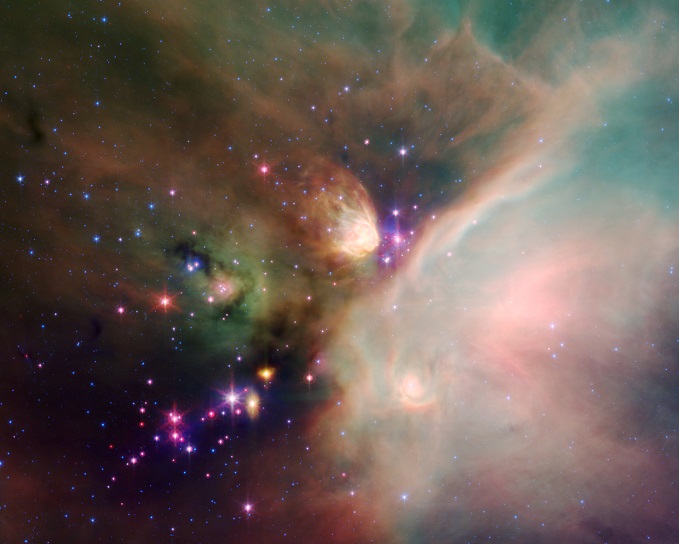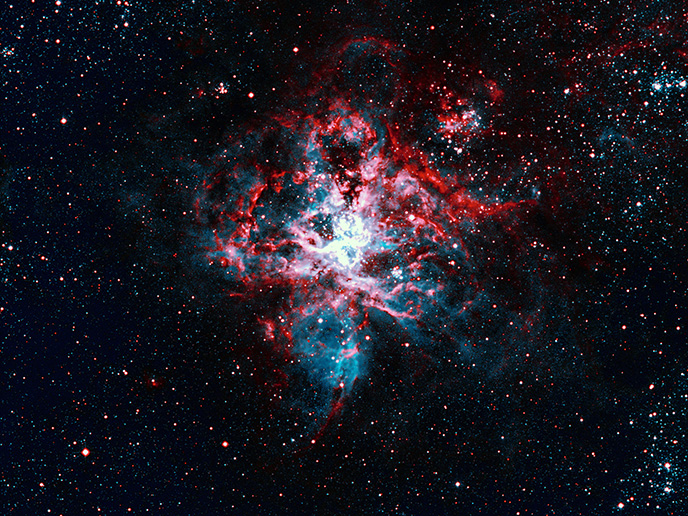On the chemical trail from star-forming clouds to planet-forming disks
New planetary systems form in the rotating disks of gas and dust around young stars. These disks are small, containing less than 1 % of the mass of the parent cloud that collapsed to form the system making them hard to observe, requiring instrumentation with high spatial resolution. The ERC-supported CHEMPLAN (Astrochemistry and the Origin of Planetary Systems) project took advantage of data coming from the new Atacama Large Millimeter/submillimeter Array - ALMA to probe the chemical composition over the full range of temperatures in these regions, from 10-1 000 K. The project succeeded in characterising the physical and chemical structure of star-forming clouds and planet-forming disks with unprecedented sharpness – on scales comparable to our own solar system. It also linked their chemical composition with that of cometary and exoplanetary systems, suggesting a pre-solar cloud origin for the molecules, which were not significantly changed en route to disk and comet. Integrated triangle of observations, modelling and lab experiments CHEMPLAN’s commencement coincided with that of ALMA, an array of 54 telescopes on a high altitude plain in Chile. ALMA has proven particularly well suited to finding molecules in nearby star-forming regions. It also surveyed large numbers of disks quickly to determine their structure and potential to form new planets. “ALMA does in one minute what it took a full night with a pre-ALMA array. Whenever a new ALMA data-set is delivered, it is like unpacking a Christmas present.” CHEMPLAN project coordinator Professor Ewine van Dishoeck says. To analyse the ALMA data, CHEMPLAN needed models of chemical kinetics and laboratory experiments to study basic chemical reactions in ices under space-like conditions. Regarding the modelling, the survival of molecules from clouds to disks, with the subsequent chemical changes in the disk, was quantified. For example, the team showed how C/O and C/N ratios (ratio of overall carbon to oxygen and carbon to nitrogen) depend on physical parameters such as temperature and ionisation rate. Moreover, the disk chemistry was subsequently coupled with planet-formation models that showed the importance of gas versus ice accretion to set the C/O ratios in exoplanetary atmospheres. The laboratory experiments have proven important in explaining the ALMA detection of complex organic molecules, like sugars and amides in a young disk around a solar-type protostar, and also their formation pathways in ices. Another major result was the first detection of a dust trap in a circumstellar disk, the site of future planetesimal formation. “These findings suggest that planet formation starts at an earlier stage than previously thought, and that water and pre-biotic molecules are already present in abundance. Both findings contribute to our attempt to answer the most fundamental questions: 'where do we come from?’ and 'could there be life elsewhere in the Universe?’” Professor van Dishoeck says. To take the work forward, the team will undertake more and deeper ALMA spectral surveys of young disks to investigate the prevalence of the current findings for just a few systems. Additionally, they will link observations from the James Webb Space Telescope of the inner regions of protoplanetary disks, with the outer disk and with exoplanetary atmosphere compositions. The researchers will also continue to fine-tune the underpinning molecular data needed to understand the chemical trail from clouds to disks.
Keywords
CHEMPLAN, ALMA, interstellar, Universe, molecule, astronomy, protostars, solar system, planets, stars, comets, exoplanets, space







